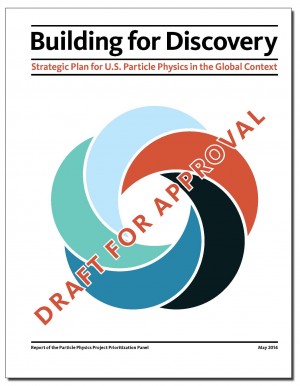Around October 2012 the US high-energy physics (HEP) community and funding agencies started a strategic exercise to create a roadmap for the future of high-energy physics in the USA. The first step was the initiation of the Snowmass process to review the complete science status of the field.
This culminated in the Snowmass 2013 meeting at the University of Minnesota in the summer of 2013. In his summary William Barletta, co-convener of the Frontier Capabilities Group, stated clearly “We welcome the initiative for ILC in Japan” and “We are experienced and ready to do it”. Chip Brock, who led the Energy Frontier group, emphasized how crucial it is to carry out a precision study of the Higgs boson. The group concluded: “An international research programme focused on Higgs couplings to fermions and vector bosons to a precision of a few percent or less is required in order to address its physics.” Chip also said unequivocally, “To me, it’s the ILC. ”
After Snowmass, the Particle Physics Project Prioritization Panel (P5) was put together and charged by the High Energy Physics Advisory Panel HEPAP to create a roadmap for the US programme. It is important to remember that P5 is a subcommittee of HEPAP and reports to HEPAP.
The high-energy physics community was involved in all stages of this process and invited to give input and comments. Colleagues from around the world joined in as well to report on their strategies. At the meeting at Brookhaven National Lab in December 2013 the American linear collider community provided input to P5 and outlined a possible plan for a US contribution to the ILC in Japan.
At the March 2014 HEPAP meeting, Steve Ritz, the P5 Chairman, gave an update on the P5 process. At this meeting P5 distilled the Snowmass recommendations into five scientific drivers which are intertwined:
- Use the Higgs as a new tool for discovery
- Explore the physics associated with neutrino mass
- Identify the new physics of Dark Matter
- Test the nature of Dark Energy in detail, and probe the physics of the highest energy scales that governed the very early Universe
- Search for new particles and interactions; new physical principles
An overarching consideration in this talk and in the final report discussed today at HEPAP is that “Particle Physics is global”. This is already reflected in the P5 process, which involves significant regional involvement and thus has a very global approach.
The complete committee report was presented to HEPAP today, 22 May 2014, and discussions about its content were ongoing as this article was written. Steve Ritz made the presentation to HEPAP. His talk can be found here.
The P5 roadmap outlines a broad particle physics programme for the USA which addresses all the science drivers mentioned above. Here we will concentrate on and single out the parts of the roadmap that involve the ILC in Japan.
The report has a total of about 29 recommendations and there are two which are directly relevant to the ILC in Japan.
The global nature of particle physics is reflected in the first recommendations of the report which states that the US should:
“Pursue the most important opportunities wherever they are, and host unique, world class facilities that engage the global scientific community.”
At several places in the talk the ILC physics case is referred to as ”extremely strong” and this is reflected in the second ILC-related recommendation:
“Motivated by the strong scientific importance of the ILC and the recent initiative in Japan to host it, the U.S. should engage in modest and appropriate levels of ILC accelerator and detector design where the US can contribute critical expertise. Consider higher levels of collaboration if ILC proceeds.”
This is a very strong endorsement of the ILC programme. It is another step towards realising the ILC and a potential US contribution.
In the discussion of the financial scenario, without fiscal constraints, P5 adds three items to the programme. One of them is US participation in the ILC and P5 says that it “would enable the US to play a world-leading role in the detector program as well as provide critical expertise and accelerator components.” They also note that “Decisions by government on whether or not to proceed, and the levels of participation, depend on many factors, beyond the scope of P5.”
This is a reminder that the financial scale of the ILC in Japan is such that high-level political agreements need to be established between the host country and the US side before “higher levels of collaboration” can be considered in the USA.
A link to the complete P5 draft report can be found here.
Officially HEPAP still needs to approve the report and hopefully that will happen after the discussion either today May 22 or tomorrow.




Many thanks for the timely “Director Corner” article, this week.